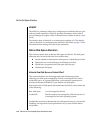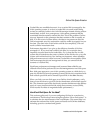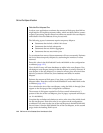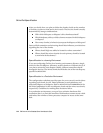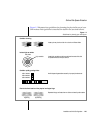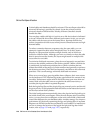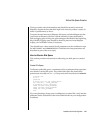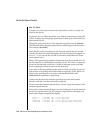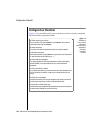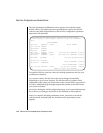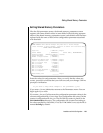
1-48 IBM Informix OnLine Database Server Administrator’s Guide
OnLine Disk Space Allocation
Raw File Space
Consult your UNIX system manuals for instructions on how to create and
install a raw device.
In general, you can either repartition your disks or unmount an existing file
system. In either case, take proper precautions to back up any files before you
unmount the device.
Change the group and owner of the character-special devices to informix.
(The filename of the character-special device usually begins with the letter r
(for example, /dev/rsd1f).
Verify that the UNIX permissions on the character-special devices are 660.
Usually, the character-special designation and device permissions appear as
crw-rw---- if you execute the UNIX ls -l command on the filename. (Some
UNIX systems vary.)
Many UNIX systems keep partition information for a physical disk drive on
the drive itself in a volume table of contents (VTOC). The VTOC is commonly
stored on the first track of the drive. A table of alternate sectors (and bad-
sector mappings) can also be stored on the first track.
If you plan to allocate partitions at the start of a disk, use offsets to prevent
OnLine from overwriting critical information required by UNIX. Specify an
offset for the root dbspace or its mirror with the ROOTOFFSET and
MIRROROFFSET parameters, respectively.
Create a link between the character-special device name and another
filename with the UNIX link command, usually ln.
Do not mount the character-special device. Do not create file systems on the
character-special devices.
Execute the UNIX command ls -lg on your device directory to verify that both
the devices and the links exist. An example output follows, although your
UNIX system display might differ slightly:
crw-rw---- 1 informix Mar 7 14:30 /dev/rxy0h
crw-rw---- 1 informix Mar 7 14:30 /dev/rxy0a
lrwxrwxrwx 1 informix Mar 7 15:15 /dev/my_root@->/dev/rxy0h
lrwxrwxrwx 1 informix Mar 7 15:15 /dev/raw_dev2@->/dev/rxy0a



